-
 Bitcoin
Bitcoin $114400
0.68% -
 Ethereum
Ethereum $3550
2.48% -
 XRP
XRP $3.001
4.99% -
 Tether USDt
Tether USDt $0.9999
0.01% -
 BNB
BNB $757.6
1.46% -
 Solana
Solana $162.9
1.07% -
 USDC
USDC $0.9998
0.00% -
 TRON
TRON $0.3294
0.91% -
 Dogecoin
Dogecoin $0.2015
2.46% -
 Cardano
Cardano $0.7379
2.01% -
 Stellar
Stellar $0.4141
8.83% -
 Hyperliquid
Hyperliquid $37.83
-1.91% -
 Sui
Sui $3.454
0.76% -
 Chainlink
Chainlink $16.62
3.53% -
 Bitcoin Cash
Bitcoin Cash $554.6
2.84% -
 Hedera
Hedera $0.2486
3.91% -
 Ethena USDe
Ethena USDe $1.001
0.00% -
 Avalanche
Avalanche $21.95
3.34% -
 Toncoin
Toncoin $3.563
-2.85% -
 Litecoin
Litecoin $112.7
2.65% -
 UNUS SED LEO
UNUS SED LEO $8.977
0.13% -
 Shiba Inu
Shiba Inu $0.00001232
1.85% -
 Uniswap
Uniswap $9.319
2.93% -
 Polkadot
Polkadot $3.632
1.38% -
 Monero
Monero $307.2
2.36% -
 Dai
Dai $0.9997
-0.03% -
 Bitget Token
Bitget Token $4.340
0.91% -
 Pepe
Pepe $0.00001048
1.07% -
 Cronos
Cronos $0.1348
3.26% -
 Aave
Aave $261.5
1.93%
How does NFT Generative Art create art through algorithms?
NFT generative art uses algorithms, defined by artists, to create unique digital artworks, each verifiable as an NFT, offering a new creative medium blending code and art.
Mar 03, 2025 at 12:19 am
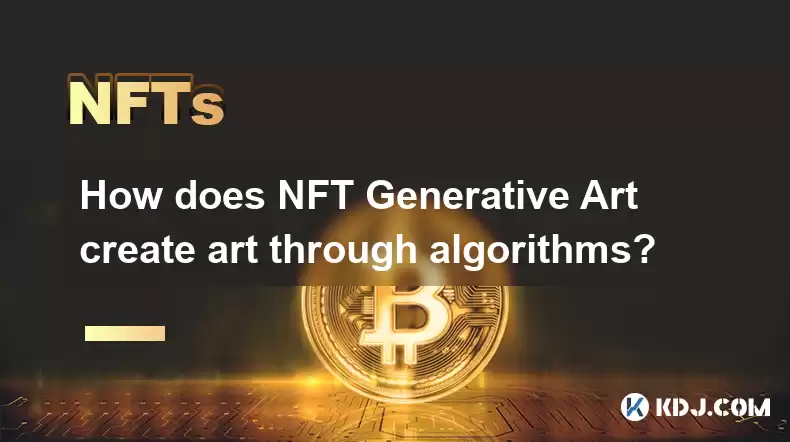
Key Points:
- Generative art uses algorithms to create unique, algorithmically-driven artworks.
- NFTs provide a verifiable ownership record for these unique digital assets.
- Various algorithms, from simple random number generators to complex neural networks, are employed.
- The artist defines parameters, influencing the final artwork's style and characteristics.
- Different platforms and tools facilitate the creation and minting of NFT generative art.
How Does NFT Generative Art Create Art Through Algorithms?
NFT generative art leverages algorithms to produce unique digital artworks. Unlike traditional art, where the artist directly creates each piece, generative art uses code as the creative medium. The artist designs a set of rules and parameters within an algorithm, and the computer then executes these rules to generate the final artwork. This process can result in thousands of unique pieces, all stemming from the same initial codebase. The uniqueness lies in the variability introduced by the algorithm, often incorporating random elements.
The algorithm itself can be incredibly simple or incredibly complex. A basic example might involve randomly assigning colors and shapes within a defined canvas. More sophisticated algorithms might utilize machine learning models trained on existing artwork to generate new pieces in a specific style. The possibilities are vast and constantly evolving with advancements in AI and coding techniques.
The Role of Algorithms in NFT Generative Art
The core of NFT generative art lies in the algorithm. It acts as the creative engine, translating the artist's parameters into a visual form. The artist's role shifts from direct creation to designing the algorithm's parameters, controlling aspects such as color palettes, shapes, textures, and overall composition. This allows for a level of artistic control while simultaneously embracing the element of surprise inherent in algorithmic processes. The final output is often unpredictable, even to the artist, adding to the excitement and uniqueness of each generated piece.
The choice of algorithm significantly impacts the final artwork. Simple algorithms might produce abstract, almost chaotic results, while more complex ones can create intricate and highly detailed pieces. Some artists use deterministic algorithms, meaning the same input always produces the same output, while others incorporate randomness to ensure every generated piece is truly unique.
Parameters and Their Influence on the Artwork
The artist's control over the final artwork is exerted through the parameters they define within the algorithm. These parameters act as variables, shaping the aesthetic characteristics of the generated art. For instance, an artist might define a parameter controlling the number of shapes in the artwork, another controlling the color palette, and yet another dictating the level of complexity or randomness.
Modifying these parameters allows the artist to fine-tune the style and characteristics of the generated art. This process can involve extensive experimentation and iteration, as the artist explores different parameter combinations to achieve their desired aesthetic. The ability to adjust these parameters is crucial in refining the artistic vision and achieving the desired output. The subtle interplay of parameters allows for a surprising amount of creative control within the framework of algorithmic generation.
Platforms and Tools for Creating NFT Generative Art
Several platforms and tools cater to the creation and minting of NFT generative art. These platforms often provide user-friendly interfaces that allow artists to design algorithms without extensive coding knowledge. They may offer pre-built templates or modules, simplifying the process of creating complex generative art. Many also integrate directly with NFT marketplaces, streamlining the process of minting and selling the generated artwork.
These platforms often offer features like previewing generated artwork, allowing artists to test different parameters before committing to a large-scale generation. They might also include tools for managing the metadata associated with each NFT, ensuring that each piece is properly identified and described. The accessibility of these platforms has significantly lowered the barrier to entry for artists interested in exploring the world of NFT generative art.
Minting and Selling NFT Generative Art
Once the generative art is created, it needs to be minted as NFTs on a blockchain. This process involves creating a unique digital token representing ownership of the artwork. Popular blockchains used for minting NFTs include Ethereum and Solana. The minting process involves uploading the artwork and its metadata to the blockchain, creating a verifiable record of ownership.
Following minting, the NFT can be listed for sale on various NFT marketplaces. These marketplaces allow buyers to browse, discover, and purchase NFTs. The price of NFT generative art can vary widely depending on factors like the artist's reputation, the complexity of the algorithm, and the perceived aesthetic value of the generated pieces. The market for NFT generative art is dynamic and constantly evolving.
Common Questions and Answers:
Q: What programming languages are typically used for creating generative art algorithms?
A: Popular choices include Processing, p5.js (a JavaScript library), Python (with libraries like Pycairo or OpenSCAD), and even more specialized languages like GLSL (for shader-based generation). The choice depends on the artist's preference and the complexity of the desired algorithm.
Q: Can anyone create NFT generative art?
A: While some coding knowledge is beneficial, many platforms offer user-friendly interfaces that require minimal coding experience. Artists can leverage pre-built templates and tools to create impressive generative art without needing to be expert programmers.
Q: How is the uniqueness of each NFT generative art piece ensured?
A: Uniqueness is primarily ensured through the incorporation of randomness within the algorithm. Each time the algorithm runs, the random number generator produces different values, leading to a unique output. Deterministic algorithms can also create unique pieces by using different inputs or parameters. The blockchain itself verifies the uniqueness of each NFT token.
Q: What are the legal implications of creating and selling NFT generative art?
A: Legal considerations include intellectual property rights, licensing, and the terms of service of the platforms used. Artists should carefully consider these aspects before creating and selling their work. Consulting with a legal professional specializing in intellectual property is advisable.
Q: How is the value of NFT generative art determined?
A: The value is subjective and influenced by several factors, including the artist's reputation, the aesthetic appeal of the artwork, the complexity and innovation of the algorithm used, the rarity of the piece within a collection, and overall market trends and demand.
Disclaimer:info@kdj.com
The information provided is not trading advice. kdj.com does not assume any responsibility for any investments made based on the information provided in this article. Cryptocurrencies are highly volatile and it is highly recommended that you invest with caution after thorough research!
If you believe that the content used on this website infringes your copyright, please contact us immediately (info@kdj.com) and we will delete it promptly.
- Cryptocurrency, Altcoins, and Profit Potential: Navigating the Wild West
- 2025-08-04 14:50:11
- Blue Gold & Crypto: Investing Disruption in Precious Metals
- 2025-08-04 14:30:11
- Japan, Metaplanet, and Bitcoin Acquisition: A New Era of Corporate Treasury?
- 2025-08-04 14:30:11
- Coinbase's Buy Rating & Bitcoin's Bold Future: A Canaccord Genuity Perspective
- 2025-08-04 14:50:11
- Coinbase's Buy Rating Maintained by Rosenblatt Securities: A Deep Dive
- 2025-08-04 14:55:11
- Cryptos, Strategic Choices, High Returns: Navigating the Meme Coin Mania
- 2025-08-04 14:55:11
Related knowledge
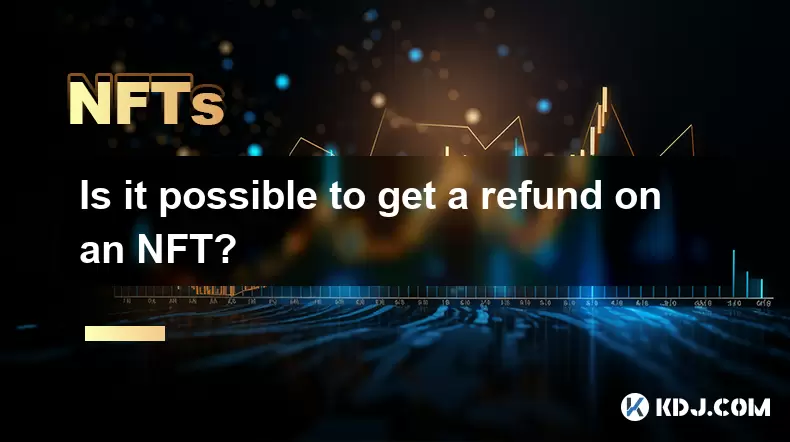
Is it possible to get a refund on an NFT?
Jul 21,2025 at 08:35pm
Understanding NFT Transactions and RefundsWhen you purchase an NFT (Non-Fungible Token), the transaction is typically recorded on a blockchain, making...
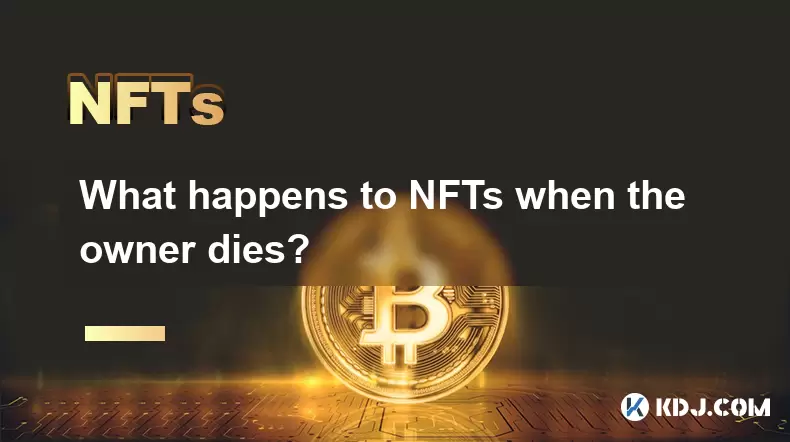
What happens to NFTs when the owner dies?
Jul 22,2025 at 02:43pm
Legal Ownership and Digital AssetsWhen an individual owns NFTs, the question of what happens to these assets upon their death is a pressing one. NFTs ...
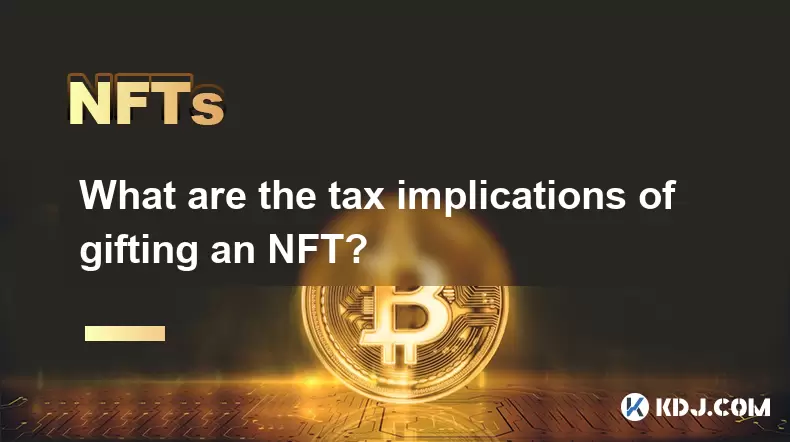
What are the tax implications of gifting an NFT?
Jul 19,2025 at 04:21am
Understanding the Basics of NFT GiftingGifting a Non-Fungible Token (NFT) involves transferring ownership from one individual to another without recei...
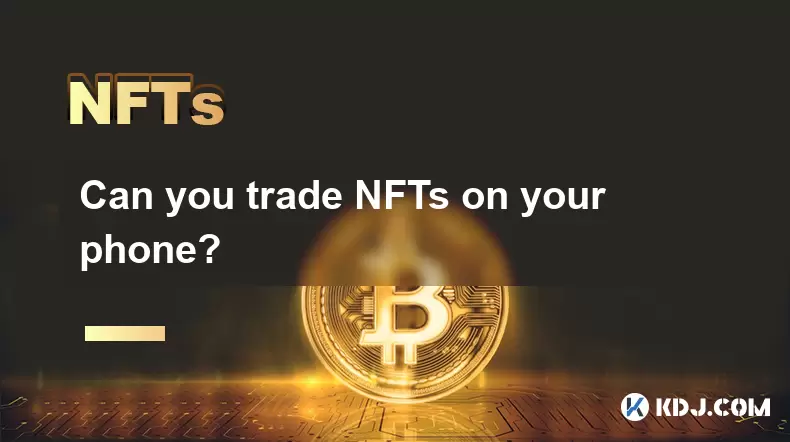
Can you trade NFTs on your phone?
Jul 18,2025 at 04:29am
Trading NFTs on Mobile DevicesYes, you can trade NFTs on your phone, and the process has become increasingly streamlined thanks to a variety of mobile...
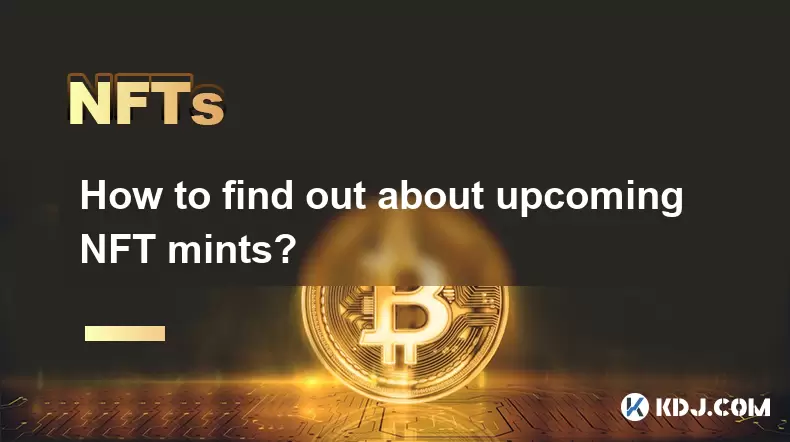
How to find out about upcoming NFT mints?
Jul 18,2025 at 11:50am
Exploring NFT Minting OpportunitiesUnderstanding the landscape of upcoming NFT mints is crucial for collectors, investors, and creators who wish to st...
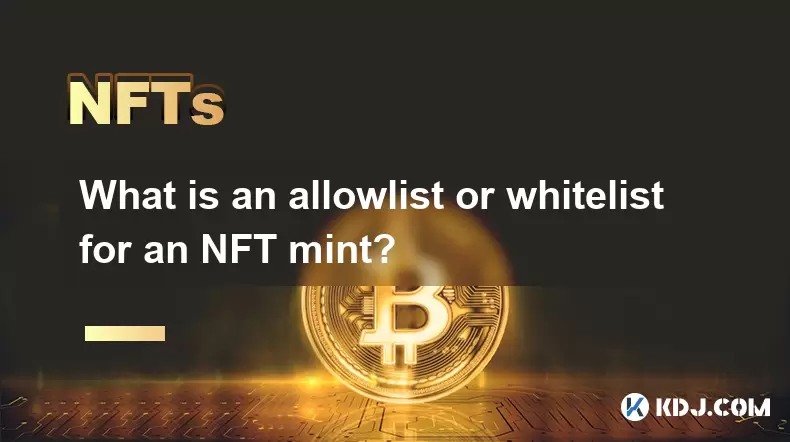
What is an allowlist or whitelist for an NFT mint?
Jul 20,2025 at 07:14pm
Understanding the Concept of an Allowlist for NFT MintingAn allowlist, also commonly referred to as a whitelist, is a mechanism used in the NFT mintin...

Is it possible to get a refund on an NFT?
Jul 21,2025 at 08:35pm
Understanding NFT Transactions and RefundsWhen you purchase an NFT (Non-Fungible Token), the transaction is typically recorded on a blockchain, making...

What happens to NFTs when the owner dies?
Jul 22,2025 at 02:43pm
Legal Ownership and Digital AssetsWhen an individual owns NFTs, the question of what happens to these assets upon their death is a pressing one. NFTs ...

What are the tax implications of gifting an NFT?
Jul 19,2025 at 04:21am
Understanding the Basics of NFT GiftingGifting a Non-Fungible Token (NFT) involves transferring ownership from one individual to another without recei...

Can you trade NFTs on your phone?
Jul 18,2025 at 04:29am
Trading NFTs on Mobile DevicesYes, you can trade NFTs on your phone, and the process has become increasingly streamlined thanks to a variety of mobile...

How to find out about upcoming NFT mints?
Jul 18,2025 at 11:50am
Exploring NFT Minting OpportunitiesUnderstanding the landscape of upcoming NFT mints is crucial for collectors, investors, and creators who wish to st...

What is an allowlist or whitelist for an NFT mint?
Jul 20,2025 at 07:14pm
Understanding the Concept of an Allowlist for NFT MintingAn allowlist, also commonly referred to as a whitelist, is a mechanism used in the NFT mintin...
See all articles

























































































